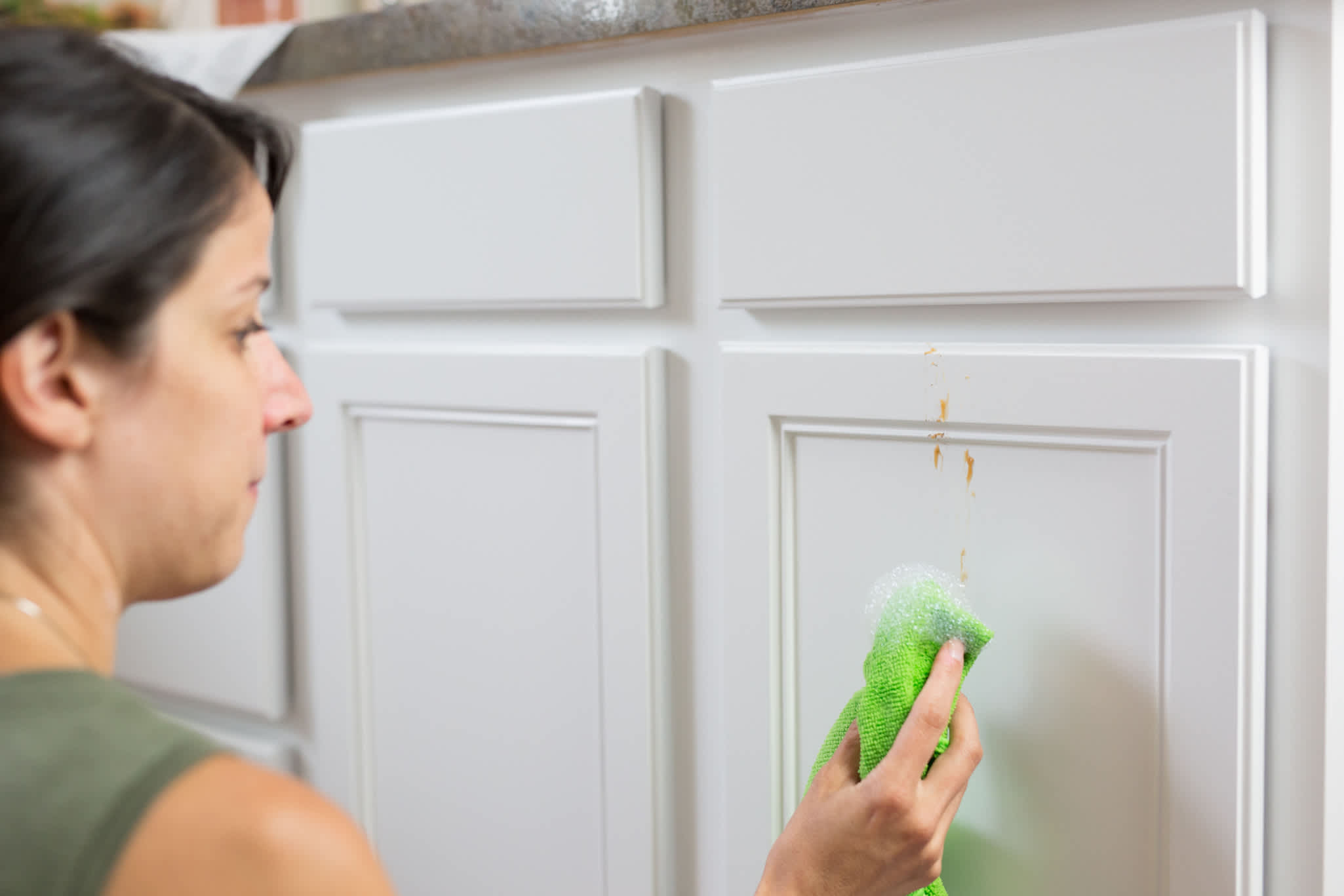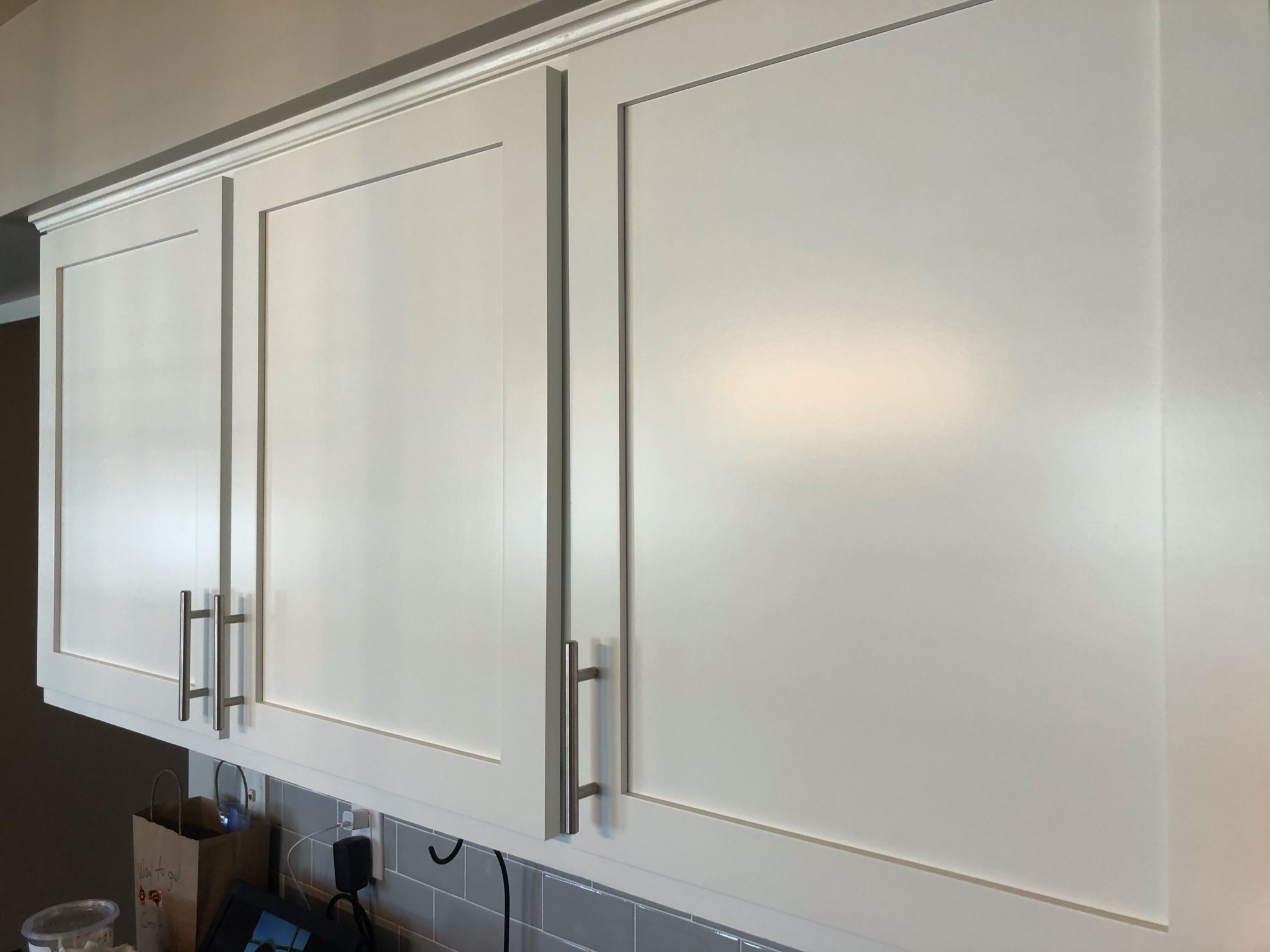Pre-Cleaning Preparation: How To Clean Painted Kitchen Cabinets

Yo, cleaning painted kitchen cabinets? It’s a vibe, but let’s do it right so you don’t end up with a total disaster. Prep is key, fam. Think of it like this: you wouldn’t just jump into a big game without warming up, right? Same goes for cleaning your cabinets.
How to clean painted kitchen cabinets – Safety first, always! We’re talking about chemicals and potentially sharp tools here. So, let’s make sure we’re all safe and sound before we even think about touching those cabinets.
Safety Precautions
Protecting yourself is crucial. Wear gloves to avoid skin irritation from cleaning solutions. Good ventilation is essential; open windows and doors to allow fresh air to circulate. Eye protection is also recommended, especially when using spray cleaners. And finally, always follow the instructions on the cleaning product labels to the letter. No shortcuts, my dude.
Cleaning Supplies
Gathering your supplies beforehand makes the whole process smoother. You don’t want to be hunting for stuff mid-clean, right? Having everything organized makes the job easier and faster.
| Cleaning Agents | Tools | Protective Gear | Other Supplies |
|---|---|---|---|
| Mild dish soap | Microfiber cloths (several!) | Rubber gloves | Soft-bristled brush (for stubborn grime) |
| Baking soda paste (for tough stains) | Soft sponges | Safety glasses | Bucket of warm water |
| All-purpose cleaner (check for cabinet paint compatibility!) | Tack cloth (for dust removal) | Apron (optional, but stylish) | Old towels |
Protecting Countertops and Floors
Protecting your surfaces is essential to avoid accidental damage from spills or drips. Think of it as creating a clean battleground for your cleaning operation. It prevents accidental damage and makes cleanup a breeze.
Cover your countertops and floors with old towels or drop cloths before you begin. This prevents any cleaning solutions from damaging your surfaces. A little prep work goes a long way in preventing a major headache later on.
Cabinet Preparation
Before you even think about scrubbing, you gotta prep those cabinets. This involves removing any loose debris and grease. It’s like pre-gaming before the main event – crucial for a successful clean.
- Dusting: Use a tack cloth or a slightly damp microfiber cloth to wipe down the entire surface of the cabinets. This removes loose dust and debris. Think of it as clearing the decks before the big clean.
- Grease Removal: For areas with grease buildup, use a soft-bristled brush and a mixture of warm water and mild dish soap to gently scrub the area. A little elbow grease goes a long way here.
- Rinse: Rinse the brush frequently and wipe away any excess soap with a clean, damp cloth. This ensures that the cabinets are properly cleaned and that no soap residue remains.
Cleaning Methods for Painted Cabinets

Yo, cleaning your painted kitchen cabinets? It’s way easier than you think, especially if you know the right moves. Doing it right keeps your kitchen looking fresh and fly, and prevents those annoying chips and scratches. Let’s get this bread!
Cleaning Methods Comparison
Choosing the right cleaning method is key to keeping your cabinets looking fresh without causing damage. Different methods work better for different situations, so knowing your options is super important.
- Wiping: This is your everyday go-to. It’s perfect for quick cleanups of light dust and spills. Pros: Super fast and easy, minimal effort. Cons: Not effective for stubborn grease or grime.
- Scrubbing: For when wiping just ain’t enough. This is your heavy-duty solution for tackling tougher messes. Pros: Effective on grease and grime. Cons: Can be more time-consuming and may scratch delicate paint if you’re too rough.
- Steam Cleaning: This is the ultimate cleaning power-up, but use it wisely. Pros: Sanitizes deeply and cuts through grease like butter. Cons: Can damage some paint finishes if the steam is too hot or used for too long. It’s also not the quickest method.
Using a Mild Soapy Solution, How to clean painted kitchen cabinets
This is your everyday cleaning MVP. It’s gentle enough for most painted surfaces and effective at removing everyday dirt and grime. Mix a tiny squirt of mild dish soap (like Dawn) with warm water in a bucket. Dip a soft, clean sponge or microfiber cloth into the solution, wring it out well (you don’t want it dripping), and gently wipe down your cabinets. Rinse with a clean, damp cloth and dry thoroughly with a soft towel. Avoid soaking the cabinets, as excess water can damage the paint. Remember to test your solution on a hidden area first to ensure it doesn’t damage the finish.
Cleaning Stubborn Stains and Grease
Okay, so you got some serious grease splatters or stubborn stains? Don’t sweat it. We got this. For tougher messes, you might need a bit more firepower. Always test any new cleaning product on an inconspicuous area first.
| Stain Type | Cleaning Agent | Effectiveness on Different Paints |
|---|---|---|
| Grease | Baking soda paste (baking soda mixed with water) | Good on most paints; avoid abrasive scrubbing |
| Sticky Residue | White vinegar solution (equal parts white vinegar and water) | Good on most paints; may slightly dull high-gloss finishes |
| Food Stains | Mild dish soap solution | Good on most paints; may need gentle scrubbing |
| Scuff Marks | Magic Eraser (melamine foam) – use cautiously! | Can be effective, but use sparingly and gently as it can be abrasive. Test on a hidden area first. |
Visual Guide to Cleaning Techniques
This visual guide will help you clean your cabinets like a pro.
Image 1: Cleaning Cabinet Doors. Shows a person gently wiping down a cabinet door with a damp microfiber cloth, moving in a smooth, even motion from top to bottom. The cloth is slightly damp, not soaking wet, to prevent water damage. The person is using light pressure, avoiding harsh scrubbing.
Image 2: Cleaning Cabinet Frames. Shows careful cleaning of the cabinet frames, paying close attention to the corners and crevices. A small, soft-bristled brush is used to reach tight spots. The cleaning solution is applied sparingly.
Image 3: Cleaning Cabinet Handles. Illustrates the cleaning of cabinet handles with a separate cloth or sponge to avoid transferring dirt from other areas. The handles are cleaned thoroughly, paying attention to any grooves or detailing. After cleaning, the handles are dried carefully to prevent water spots.
Post-Cleaning and Maintenance

Yo, so you just totally slayed cleaning your kitchen cabinets? High five! But the job ain’t over ’til the cabinets are dry and looking fresh AF. Proper post-cleaning care is key to keeping those bad boys shining and preventing any unwanted drama, like water damage or streaks. Let’s keep it real and talk about how to maintain that fresh-out-the-box look.
Drying painted cabinets effectively is crucial to avoid water damage and those annoying streaks. Think of it like this: leaving water droplets on your cabinets is like leaving a wet towel on your favorite band tee – it’s gonna leave a mark!
Effective Drying Techniques
To prevent water spots and streaks, immediately after cleaning, use a clean, soft microfiber cloth to gently wipe down each cabinet door and panel. Don’t just slap it on there – really work it to absorb any excess water. For stubborn areas, a second, dry cloth can be used for extra absorption. If you’re dealing with a super large area, consider using a low-speed fan to circulate air and speed up the drying process. Avoid direct sunlight or harsh heat, as this can damage the paint. Think of it like air-drying your hair – low and slow is the way to go. A well-ventilated room will help, too.
The Importance of Regular Maintenance
Keeping your cabinets looking fresh is less about major cleaning marathons and more about consistent, low-key maintenance. Regular cleaning prevents dirt and grime from building up, which makes future deep cleans way easier. Plus, it helps keep those cabinets looking their absolute best. Think of it like brushing your teeth – daily maintenance prevents major dental work later.
A Cleaning Schedule
Let’s get organized! Here’s a realistic cleaning schedule that will keep your cabinets looking fly:
Routine Cleaning: Wipe down cabinet doors and handles with a damp microfiber cloth once a week. This quick clean tackles everyday spills and smudges.
Deep Cleaning: Every 3 months, give your cabinets a more thorough deep cleaning. This involves using a gentle cleaner (like a mild dish soap solution), wiping them down, and then drying thoroughly. This tackles more stubborn grime.
Annual Deep Clean: Once a year, consider a more intensive deep clean, including cleaning the cabinet interiors and paying extra attention to hard-to-reach areas. Think of this as the cabinet equivalent of spring cleaning.
Emergency Clean-Up: Always tackle spills immediately to prevent stains. A quick wipe with a damp cloth will save you major headaches later.
